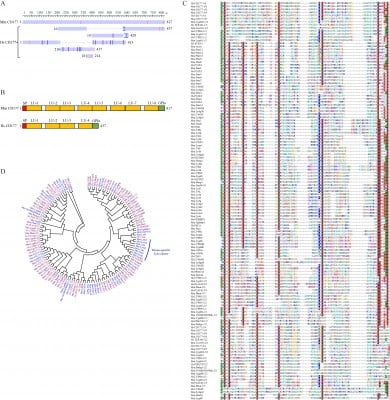Newswise — Since its discovery in the late 1970s, the lymphocyte antigen 6 (Ly-6) family has garnered significant attention as a prototype for the concept of “differentiation antigens.” Ly-6 antigens contain a conserved LU domain, with some members featuring a glycosylphosphatidylinositol (GPI) anchor that allows attachment to the cell membrane. Mouse Ly-6A/Sca-1 is widely used as a surface marker for various stem cells; however, a direct homolog has not been identified in the human genome.
A collaborative study by Saijuan Chen, Jinyan Huang, Zhebao Wu, Xiaojian Sun, et al. from Ruijin Hospital, affiliated with Shanghai Jiao Tong University School of Medicine and colleagues, has revealed a novel human gene, LY6A. Through systematic investigation and comparative genomic studies of LU domain proteins in humans and mice, the researchers discovered that LY6A encodes a homologous protein of mouse Ly-6A/Sca-1, which is abnormally expressed in pituitary tumors. The study was published in Frontiers of Medicine (DOI: 10.1007/s11684-022-0968-4).
By conducting systematic searches and comparative genomic analyses, the researchers identified 37 human and 64 mouse LU domain genes, totaling 130 LU domains. The novel gene LY6A was found in the human chromosome 8q24.3 region, exhibiting collinearity with the region containing the mouse Ly6a gene, and is considered a candidate for encoding the homologous protein of mouse Ly-6A/Sca-1.
The researchers cloned the full-length cDNA of LY6A and analyzed its expression, finding that it is abnormally overexpressed in pituitary tumors, while showing no or low expression in normal pituitary tissues. Further studies indicated that LY6A expression can be induced by interferon (IFN) and is highly expressed in the spleen, testes, and certain adipose tissues.
Functional studies demonstrated that the protein encoded by LY6A is highly conserved in sequence, domain structure, and exon-intron organization compared to mouse Ly6a family members, and it can be correctly expressed, processed, and anchored to the cell membrane. Cells overexpressing LY6A exhibited slightly enhanced proliferative capacity. Additionally, the study identified a high-frequency nonsynonymous coding single nucleotide polymorphism (SNP) in LY6A, with allele frequency differences observed across various ethnic groups.
This research marks the first identification and cloning of the human LY6A gene, providing critical insights into the evolution, expression, and function of Ly-6 family genes, as well as serving as an important model for exploring gene regulation and evolutionary mechanisms. The abnormal expression of LY6A in pituitary tumors suggests its potential as a candidate biomarker for cancer diagnosis and treatment, paving new avenues for future cancer research and therapy.
